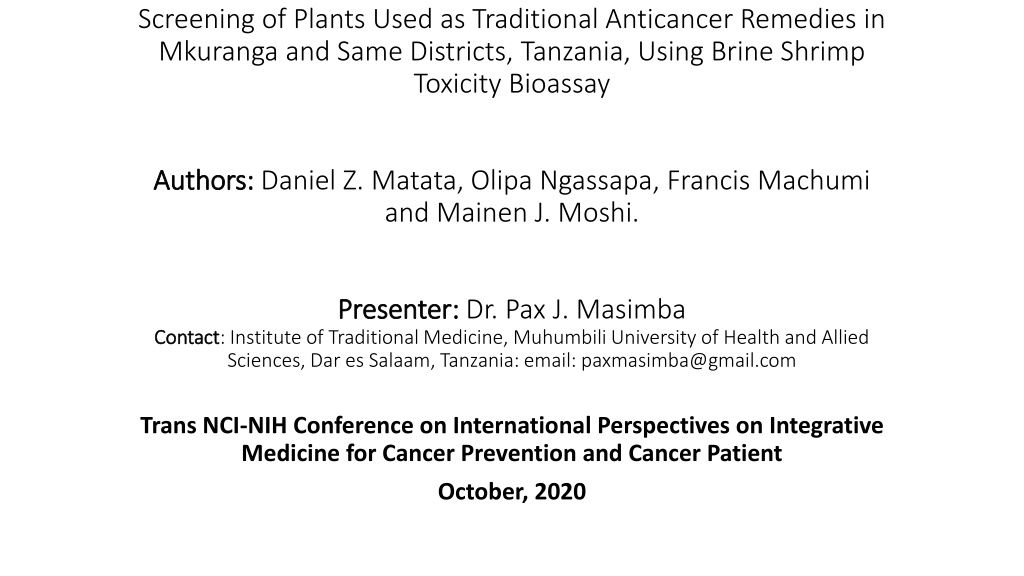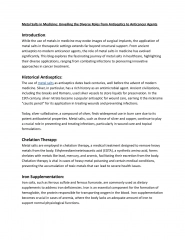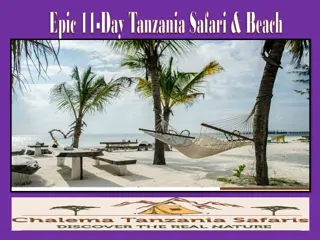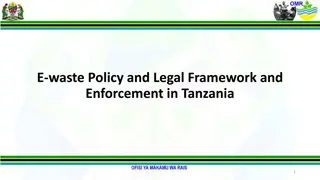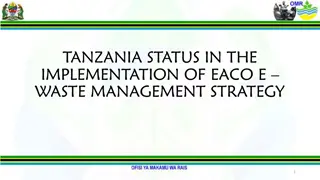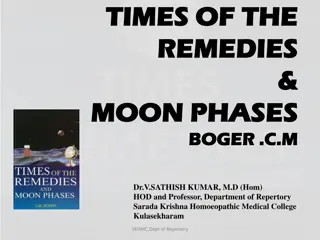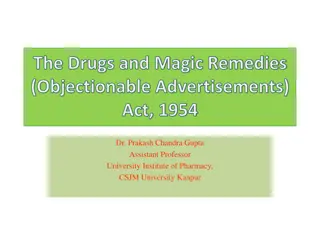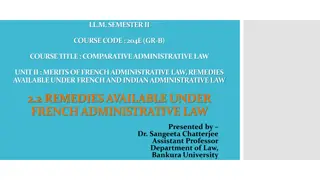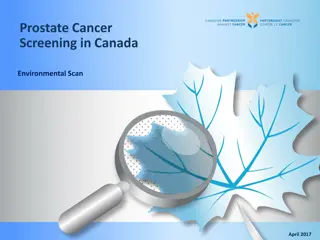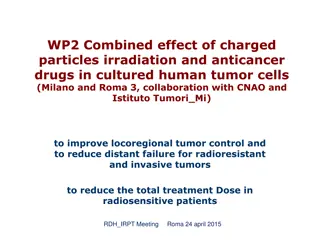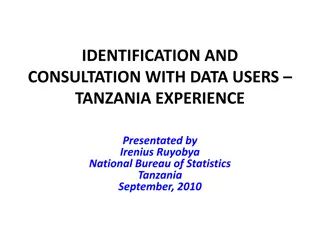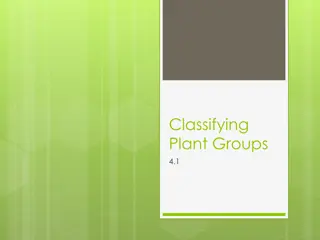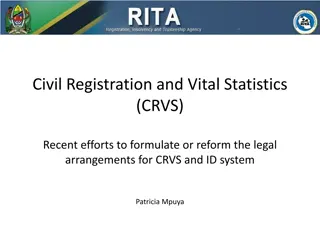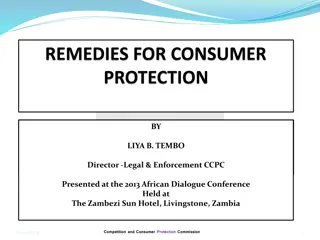Screening of Plants Used as Traditional Anticancer Remedies in Tanzania
Traditional Health Practitioners in Mkuranga and Same Districts, Tanzania, shared ethnomedical knowledge on medicinal plants used for cancer management. A total of 25 plant species were identified, with 56% showing brine shrimp toxicity. Potential anti-cancer candidates such as Ochna mossambicensis and Loranthus micranthus were discovered through the study. Laboratory investigations using the Brine Shrimp Test were conducted, highlighting the importance of utilizing traditional knowledge in the search for anti-cancer agents.
Download Presentation

Please find below an Image/Link to download the presentation.
The content on the website is provided AS IS for your information and personal use only. It may not be sold, licensed, or shared on other websites without obtaining consent from the author. Download presentation by click this link. If you encounter any issues during the download, it is possible that the publisher has removed the file from their server.
E N D
Presentation Transcript
Screening of Plants Used as Traditional Anticancer Remedies in Mkuranga and Same Districts, Tanzania, Using Brine Shrimp Toxicity Bioassay Authors: Authors: Daniel Z. Matata, Olipa Ngassapa, Francis Machumi and Mainen J. Moshi. Presenter: Presenter: Dr. Pax J. Masimba Contact Contact: Institute of Traditional Medicine, Muhumbili University of Health and Allied Sciences, Dar es Salaam, Tanzania: email: paxmasimba@gmail.com Trans NCI-NIH Conference on International Perspectives on Integrative Medicine for Cancer Prevention and Cancer Patient October, 2020
Background: Background: Traditional Health practitioners (THPs) in Tanzania are frequently contacted by some cancer patients before visiting allopathic hospitals due to inadequate hospitals and high management costs. Gathering ethnomedical information from the THPs and screening the revealed medicinal plants could contribute to discovery of anti-cancer agents. The study aimed to collect ethnomedical information and screen medicinal plants used for management of cancer by THPs in Mkuranga and Same Districts in Tanzania so as to identify possible anti-cancer candidates that can be developed further. This study was funded by the Government Chemist Laboratory Authority of Tanzania, under the Ministry of Health, Social Welfare, Community Development, Gender, Elderly and Children.
Methodology Methodology This was an ethnomedical enquiry and laboratory investigation of medicinal plants focusing on cancer. The enquiry involved meetings, face to face interviews and administration of questionnaires to selected THPs in Mkuranga and Same districts in Tanzania regarding claimed plants and their use for cancer management. Selection of the THPs was based on information from patients who visited THPs in the two districts to seek treatment for cancer as well as other informants and local government leaders. Laboratory investigation using Brine shrimp test (BST), was done to screen plants frequently mentioned and emphasized by the THPs. Methanol:Dichloromethane (1:1) was chosen as solvents to extract each (100g) of the ground plant materials. Maceration was done for 24 hours. The brine shrimps were exposed to different concentrations of the plant extract for 24 hours as previously described (Moshi et al., 2004). Catharanthus roseus leaf extract was used as appositive control. The mean percentage mortality was calculated using fig P computer program (Biosoft Inc., USA) and regression equations generated were used to calculate LC50. The study received ethical clearance (MU.02/9024/Vol.II) by the University Institutional Review Board. Permission to conduct the study was sought from the local authorities in the two districts.
Results Results A total of 25 plant species were mentioned to be used by eight THPs in the two districts for treatment of cancer. Same district THPs mentioned 23 of these plant species while Mkuranga district THPs mentioned three of these species. These plants belong to 17 families, with 1-4 plant species per family. Fourteen (56%) of the mentioned plants exhibited brine shrimps toxicity in the study of less than 100 g/ml; the most active ones and their corresponding LC50 being; Ochna mossambicensis Klotzsh (3.3 g/ml), Loranthus micranthus Linn (4.0 g/ml), Croton pseudopulchellus Pax (LC50 4.2 g/ml), Spirostachys africana Sond. (4.4 g/ml) and Dalbergia melanoxylon Guill. & Perr. (6.8 g/ml), and with their toxicity comparable to that of the used positive control, Catharanthus roseus (L) G. Don. (6.7 g/ml).
Discussion and conclusion Discussion and conclusion It has been previously reported that in BST assay extracts with LC50 below 100 g/ml can predict and be considered potential candidates for anticancer activity (Moshi et al., 2004; Moshi et al., 2006). In this study therefore by using the above criteria the likely anticancer candidates would be Baphia kirkii (LC50 71.7ug/ml), Diospyros zombensis (67.2 g/ml), Ueclea natalensis (66.2 g/ml), Maerua triphylla (57.5 g/ml), Securidaca longipendunculata (55.3 g/ml), Leucas martinicensis (54.0 g/ml), Zanthoxylum chalybeum (38.5 g/ml), Boswellia neglecta (27.8ug/ml), Cordia africana (19.8ug/ml), Dalbergia melanoxylon (6.8ug/ml), Spirostachys africana (4.4 g/ml), Loranthus micranthus (4.0 g/ml) and Ochna mossambicensis (3.3 g/ml). Eight (32%) plant mentioned had been reported in literature to have anti-cancer activity against various cancer cell lines which include cytotoxic or antiproliferative activity against leukaemia HL-60 cell line (Sehar et al., 2011), breast and lung cancer cell lines (Wangteeraoraser et al., 2012) and hepatocellular carcinoma (Njagi et al., 2016). Similar low LC50 in BST were previously reported for Dalbergia melanoxylon and Diospyros zombensis (Moshi et al, 2006). Therefore, the BST results obtained and the literature support can form the basis for further anticancer studies for the most bioactive plant extracts. The results form a strong case to explore medicinal plants as alternative sources for isolating and developing anti-cancer agents.
